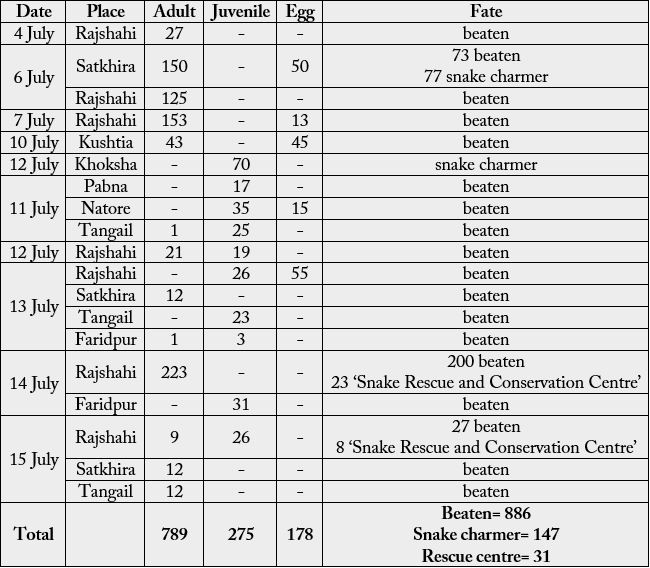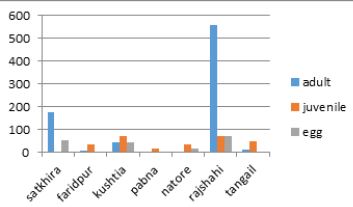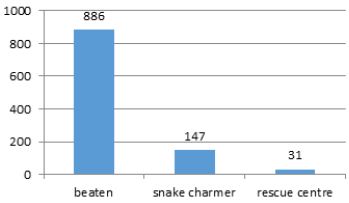Biography
Interests
Ashraful Kabir, M.
Department of Biology, Saidpur Cantonment Public College, Nilphamari, Bangladesh
*Correspondence to: Dr. Ashraful Kabir, M., Department of Biology, Saidpur Cantonment Public College, Nilphamari, Bangladesh.
Copyright © 2019 Dr. Ashraful Kabir, M. This is an open access article distributed under the Creative Commons Attribution License, which permits unrestricted use, distribution, and reproduction in any medium, provided the original work is properly cited.
Abstract
Due to flood 7 zillas of Bangladesh 1064 cobras and 178 eggs were found. Only 8 days record because of entry of water in rat hole all cobras came out from the soil. Due to fear to snakes most were killed by people. Out of 1064, only 31 transferred to rescue centre at Rajshahi, 147 in local snake charmer, and rest 886 were beaten. 178 eggs were directly destroyed or burnt by the local people. Interestingly, there were no biting records in this regard. Rajshahi division of Bangladesh has shown the highest number of adult, juvenile, and eggs of cobra then in Kushtia district. Moreover, Satkhira and Tangail the number of cobras were remarkable. Apparently, local authority could not provide those snakes due to lack of snakes’ house in zoos or rescue centres. Only 17 juveniles of cobra were found in Faridpur district.
Cobra Killing Statistics



Discussion
The temperature of the northern regions of Bangladesh is almost 350-370 F which is suitable for snakes’
activities. There were 30.77% poisonous and 69.23% non-poisonous snakes’ in Bangladesh with their
three families [3]. In Bangladesh, out of 82 species 28 are venomous and 12 are sea snakes [2]. Estimates
indicate ˃5 million bites annually by venomous snakes worldwide where ˃12500 deaths [8]. Some research
work have completed on snakes taxonomy, status, distribution, and epidemiology of snake bite [1,7,10].
According WHO, India has the highest number of snake bites in the world with 35,000-50,000 annually
[6,11]. In Bangladesh, this is 4.3 per 100000 an annual incidence and case fatality is 20% [9]. There are many
superstitions about the snakes are still continuing in the country [5]. The powerful jewel of the snakes’ head,
snakes dance by whistling in some movies and milk sucking of rat snake from cow is common and famous
story about snake of Bangladesh. Snakes are odd pet so this is not suitable at home and playing with them
[4].
Conclusions
When flood comes in Bangladesh for water snakes are come out from the hole. People bite snakes for
getting fear. Moreover, cobra snakes are deadly poisonous so that their fate is almost death. In our country,
all medical colleges should preserve adequate antivenoms. In rural areas, if snake bites, most affected persons
cannot come in hospital in proper time. Ultimately they show death. Some illegal snake farms are growing
and they have no training and do not know about snakes.
Recommendations
For avoiding unusual killing of snakes we should maintain following steps-
• Before flood we will take decision for rehabilitating those snakes
• We should import lots of antivenoms
• We should aware about snakes’ bite
• We should focus on the primary treatment of snake bites
• We should not consult with any snake charmer for the treatment of affected person
• Zoology department of any universities or colleges should alert in flood season
• Vet/Livestock officer, zoo authority, wildlifer, and zoology teacher and student can play a vital role in any
emergencies
Bibliography

Hi!
We're here to answer your questions!
Send us a message via Whatsapp, and we'll reply the moment we're available!